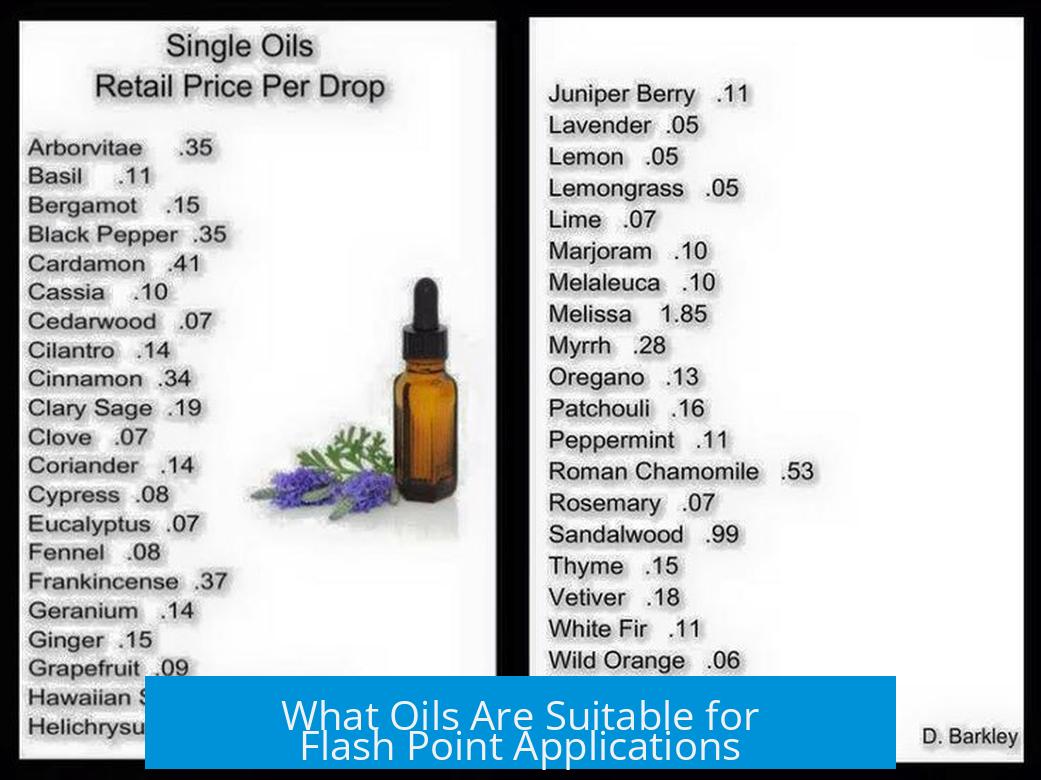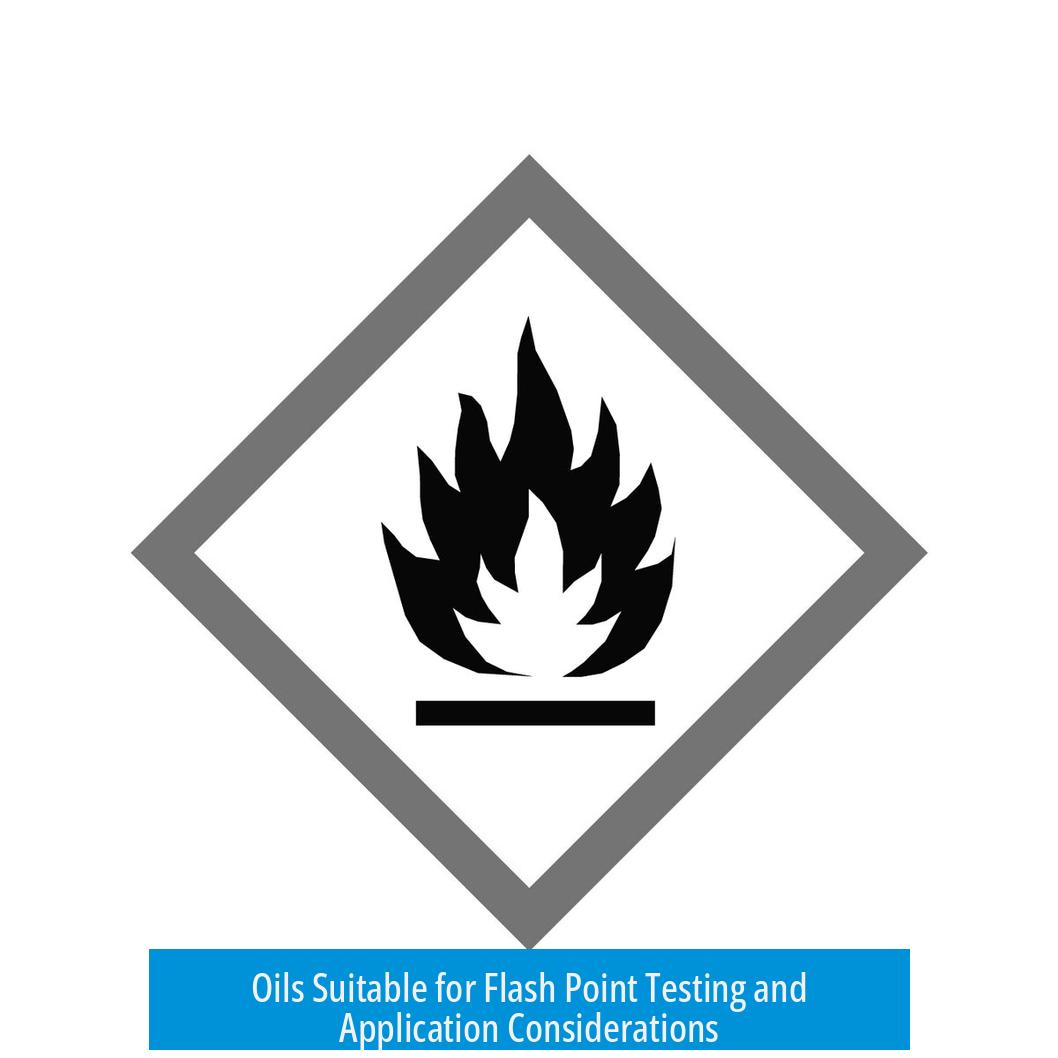What Oils Are Suitable for Flash Point Applications?

Oils with well-defined flash points include mineral oils, cooking oils, peanut oil, and silicone oil. These oils are commonly used in flash point testing or applications where temperature thresholds for ignition are important.
Oils Commonly Used for Flash Point Testing
- Mineral and Cooking Oils: These oils have broad acceptability for flash point use. They often have clear flash point ranges that make them suitable for testing or applications involving heat exposure.
- Peanut Oil: Peanut oil is favored in some industrial contexts, such as coating tests in electroplating. Its flash point exceeds 315°F (157°C), making it stable for deep-frying processes and heat treatment experiments.
- Silicone Oil: Silicone-based oils also serve in environments needing precise thermal behavior. They exhibit consistent flash points and thermal stability, useful for specialized industrial tests.
Comparison to Engine Oils
Automotive or car engine oils are not typically preferred for flash point testing due to their complex additive packages and variable composition. Such variability can affect consistent flash point results and complicate safety assessments.
Understanding Flash Point vs. Autoignition Temperature
The flash point is the lowest temperature at which a liquid emits enough vapor to ignite if exposed to a spark or flame. Autoignition temperature, by contrast, is the temperature at which a substance spontaneously combusts without any ignition source. This distinction is critical in selecting oils for safe thermal management.
Application Considerations
Choosing an oil for exposure to high temperatures, like dunking hot metals, depends on the goal, such as heat treatment or safety testing. Oils with higher flash points reduce the risk of ignition during heating.
Summary of Key Points
- Mineral, cooking, peanut, and silicone oils have defined and useful flash points.
- Peanut oil’s flash point is above 315°F, suitable for high-heat uses.
- Engine oils may offer inconsistent flash points due to additives.
- Flash point indicates ignition potential at spark presence; autoignition is spontaneous combustion.
- Oil selection should align with the thermal application and safety requirements.
What types of oils are suitable for flash point testing?
Mineral and cooking oils work well for flash point testing. Most cooking oils and automotive oils are acceptable for this purpose.
Can peanut oil be used for flash point tests?
Yes, peanut oil is useful for flash point testing. Its high flash point, above 315°F, makes it suitable for tasks like deep frying and coating tests.
Is silicone oil appropriate for flash point measurements?
Silicone oil can be used. It is often mentioned alongside mineral and cooking oils for such tests, depending on the specific application.
Why might car engine oils not be the best choice for flash point tests?
Car engine oils have different additives and properties. These can affect their flash points, making them less predictable for standard flash point testing.
What is the difference between flash point and ignition temperature?
Flash point is when vapors ignite with a spark. Ignition temperature is when a substance combusts spontaneously without a spark or flame.





Leave a Comment